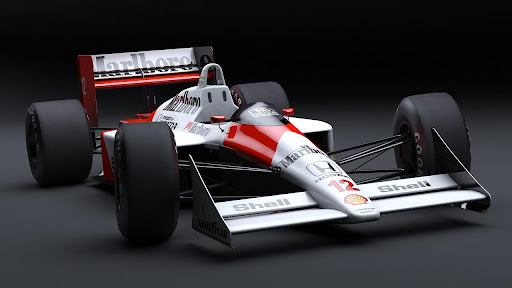The significance of lights in automobiles extends far beyond mere aesthetics; they are fundamental components crucial for safety and functionality. From the low visibility of foggy or stormy weather to the darkness of night, headlights illuminate the path ahead and enable drivers to make their journey with confidence and clarity. There are several headlight options that car owners can choose from today, with halogen and LED headlights being the two most common choices. This article compares these two types of headlights and discuss their advantages and disadvantages.
What are Halogen Headlights?
For many years, halogen headlights have been the standard in vehicle lighting. These bulbs function by heating a tungsten filament encased in a glass envelope filled with halogen gas, which emits light upon electrification. Halogen headlights are straightforward in design and cost-effective to produce, making them widely accessible. However, they are not the most energy efficient as the heat they produce during operation leads to energy loss. Moreover, the warm light it produces is only moderately bright.
What are LED Headlights?
LED headlights represent a leap forward in lighting technology. They produce light through a semiconductor that emits photons when an electric current is applied. This method is more energy-efficient, as very little energy is wasted as heat. LEDs also shine brighter and emit a light that resembles natural daylight, providing superior visibility. There are a variety of LED headlights, from H7 LED headlights to H11 LED headlights.
LED lights are also used on tractors, combines, backhoes, and machinery. You can find LED lights for Case IH tractors and industrial machinery and equip everything from a backhoe, tractor, combine, dozer, or other industrial machinery with Tiger Lights. Tiger Lights features a plug-and-play design, and the LED lighting is powerful enough to illuminate up to 330% brighter than halogen.
Halogen vs. LED Headlights
Energy Efficiency and Performance: Energy efficiency is a standout difference between the two types. LEDs consume significantly less power to produce the same amount of light as halogen bulbs. This translates into lower fuel consumption in combustion engine vehicles and longer battery life in electric models. This efficiency also means that LEDs put less strain on a vehicle’s electrical system.
Brightness and Visibility: Halogen bulbs produce a warm, yellowish light. They provide adequate visibility, but their illumination range and intensity are often less than optimal, especially in adverse weather conditions or on unlit roads. On the other hand, LED headlights are renowned for their superior brightness and clearer, whiter light, which closely mimics natural daylight. This enhanced brightness and higher color temperature of LEDs not only improve visibility but also aid in better distinguishing objects and road signs at night, reducing eye strain and improving reaction time for drivers.
Performance in Specific Weather Conditions: The effectiveness of automotive headlights can vary significantly under different weather conditions. In foggy or heavy rain scenarios, halogen bulbs can sometimes offer an advantage. This type of light tends to scatter less, reducing glare and providing better penetration through moisture-laden air. However, with advancements in technology, LED lights are continually improving in performance across various weather scenarios.
Longevity and Durability: LEDs have a much longer lifespan, often lasting as much as 30,000 hours or more, compared to approximately 1,000 hours for halogens. This durability means less frequent replacements, contributing to cost savings and reduced waste. Additionally, LEDs are robust against vibrations and impacts, an advantage in challenging driving environments.
Cost Considerations: The initial cost of LED headlights is higher than halogen bulbs. However, this is offset by the longevity of LEDs and their energy efficiency, which lead to savings over time. Meanwhile, halogens have a shorter lifespan and higher energy consumption. Yet, they continue to be a popular choice for budget-conscious consumers.
Environmental Impact: LEDs have a lower environmental impact due to their energy efficiency and longevity. They contribute to reduced carbon emissions in fuel-powered vehicles and are beneficial in electric vehicles for their low power consumption. Halogens, with shorter lifespans and higher energy usage, have a larger environmental footprint.
Heat Emission and Safety: Traditional halogen bulbs generate considerable heat due to their incandescent nature, where a filament is heated to produce light. This high heat output not only increases the risk of burns during handling and maintenance but can also affect surrounding vehicle components, potentially shortening their lifespan or causing damage. In contrast, LED headlights have significantly lower heat emissions, making LEDs safer to handle and less likely to impact other parts of the headlight assembly or vehicle.
Design Flexibility: The compact nature of LEDs allows for innovative and varied headlight designs, enabling car manufacturers to create distinctive and modern front-end appearances. Halogens, with their larger bulbs, are more limited in design flexibility.
Installation and Regulatory Compliance: Both types of headlights must adhere to regulations regarding brightness and beam pattern. Halogen bulb replacement is typically a simple, straightforward process. For LED retrofits in vehicles initially equipped with halogen bulbs, professional installation and alignment are often recommended to ensure compliance and optimal performance.
Conclusion
When choosing between halogen and LED headlights, considerations such as upfront cost, long-term savings, environmental impact, and lighting performance come into play. While halogens offer simplicity and initial affordability, LEDs bring advanced technology with superior efficiency, brightness, and lifespan. As automotive technology evolves, the shift towards LEDs is becoming increasingly prominent, as consumers look for more sustainable options. By understanding the differences between halogen and LED headlights, you can make an informed decision that contributes to a safer and more environmentally conscious driving experience.









